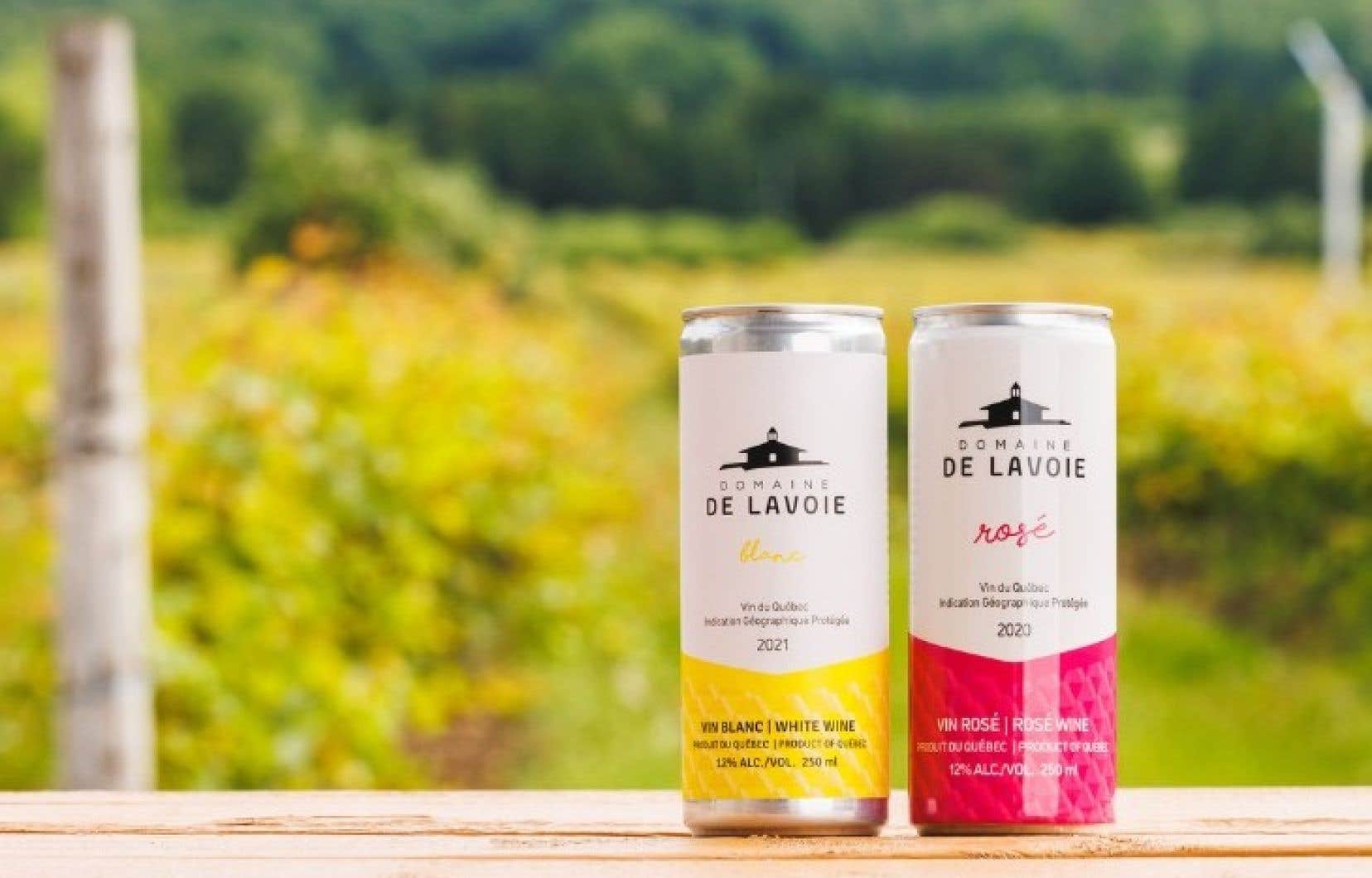This text is part of the special Pleasures notebook
The first phase of the deposit modernization project, which came into force on 1er November, now allows consumers to return all aluminum beverage containers from 100 ml to 2 l. It’s time to try cocktails, wine or canned piquette, an emerging eco-friendly way of consuming alcohol.
If European and American vineyards started bottling their vintages in cans a few years ago, Quebec is getting started more slowly.
However, the advantages of the can are numerous: aluminum, infinitely recyclable, has a greatly reduced carbon footprint compared to the glass bottle. The can is lightweight, smaller and ergonomically shaped; a producer can thus transport more cans of wine in a single trip to its points of sale, and a consumer can bring their favorite drink to the campsite, to the park or on a hike.
In addition, the can of wine, most often offered in a 250 ml format, is a practical option for those who want to reduce their alcohol consumption or for single people who do not want to commit to drinking. a whole bottle.
All reasons are good to adopt it… or almost.
For and against
Domaine de Lavoie, located in Rougemont, was the first, in 2021, to offer a Quebec rosé wine in a can on the SAQ shelves. Francis-Hugues Lavoie, co-owner, seeing the advent of canned wines elsewhere in the world, quickly approached the SAQ with his idea. “It’s the same wine as in a bottle, but in a can,” explains Francis-Hugues Lavoie, a fervent fan of this practical format.
“The goal was to get closer to the context of consumption of microbrewed beer,” he explains. The following year, he also launched his white in cans.
However, few have followed suit. There is certainly Le Domaine Bergeville, which has been offering its Colfo bubble cuvée in cans since 2020, as well as Lieux communes, which has been offering its base wine in cans since 2022. Matthieu Beauchemin, winemaker and co-owner of Domaine de Nival, has for his part offered his eau-de-wine in a can since last summer. The winemaker explains that “the can makes a lot of sense for the piquette. Not only for the ecological and economic aspects, but also for its consumption context. We suggest drinking it straight from the can, so no need to carry glasses around! »
However, for his classic vintages, he would not even think of it. “What makes the beauty of wine is also the decorum that comes with it: remove the cork, let it aerate, decant, pour into appropriate glasses,” the winemaker aptly summarizes. Wine is not Coke! »
In addition, the can is intended for the rapid consumption of a vintage, it is absolutely not made for the conservation of so-called wines for aging. “If I put my wines in cans, would I send the message that they are not good for aging?,” he asks himself. I have to think about that, since my wines are good to be stored in the cellar for a few years! »
And anyway, not all vintages are suitable for the aluminum container. Francis-Hugues Lavoie explains that with the can we lose certain olfactory aromas. “You need a tasty product, with bright aromas. The idea is to put in a can a wine that is easy to drink, easy to drink, fruity,” he adds.
Verdict?
We probably won’t see wineries bottling all their vintages in cans anytime soon. “It would be difficult to completely abandon the glass bottle,” admits Matthieu Beauchemin. However, there is definitely an interest in developing other canned products. At Domaine de Lavoie as well as at Domaine du Nival, we are considering offering bubbles or perhaps even a thirst-quenching red in future vintages.
To be enjoyed next spring, who knows?
On the ready-to-drink side
This content was produced by the Special Publications team at Duty, relating to marketing. The writing of the Duty did not take part.
